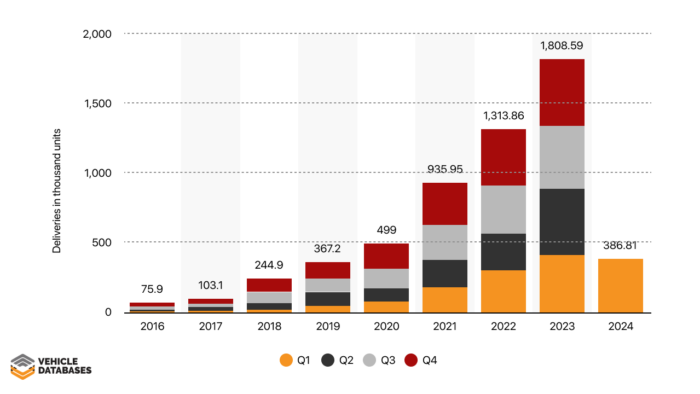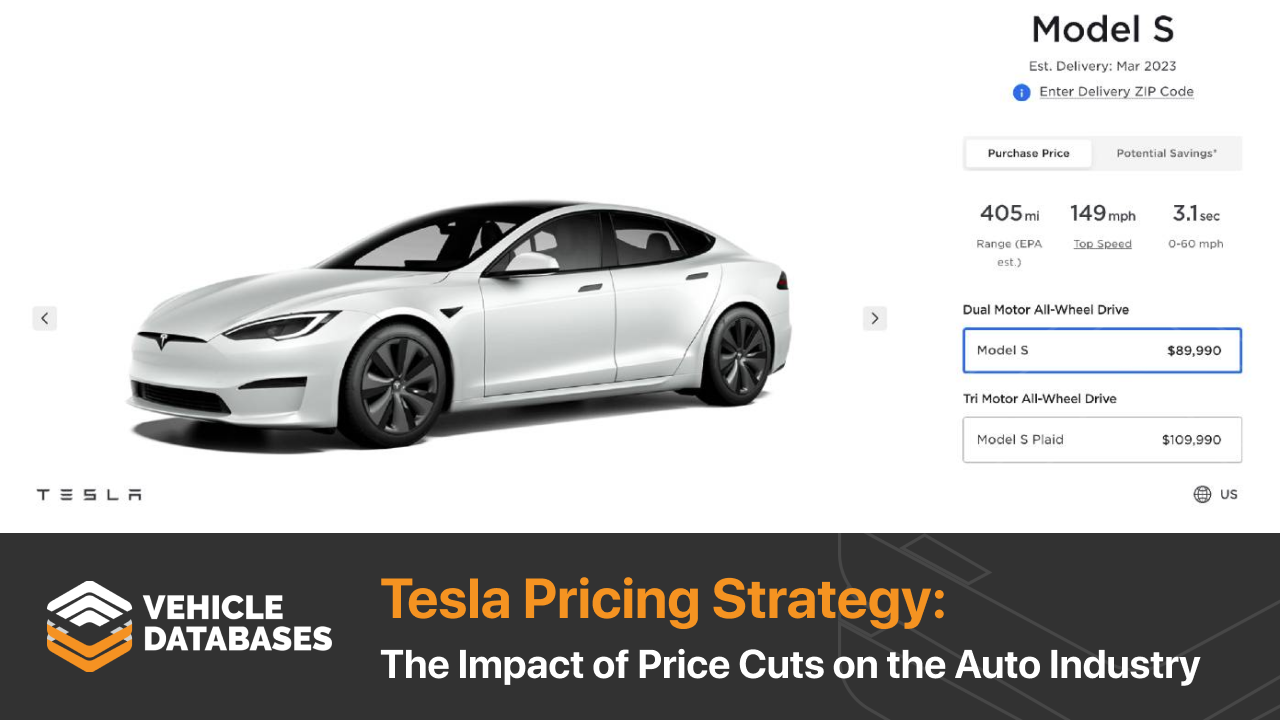Tesla has shaken up the auto industry not just with its electric vehicles, but also with its unique approach to pricing. His approach may be effective, but sometimes leaves consumers and shareholders confused. So what is the Tesla pricing strategy?
Tesla uses something called the floating pricing strategy where the Company can at any time decide to increase or decrease prices. And no, costs, supply, and demand are not usually the sole predictors of this price. So what’s the purpose of this approach? How does Tesla benefit from this? What impact does it have on the auto industry? Keep reading to find out.
What Makes The Pricing Strategy Of Tesla Unique In The Automotive Industry?
Most car companies tend to use basic pricing strategies such as cost-plus pricing, value-based pricing, or competitive pricing methods for their new vehicles.
Cost-plus pricing involves pricing based on the cost of production, costs of selling, and an added markup. Manufacturers calculate their production costs (including materials, labor, and overhead) and then add a predetermined percentage to arrive at the selling price.
Another popular one is value-based pricing where prices are set based on how much value consumers place on the vehicles and the willingness to pay for the experience they have with the service or product. This is one of the most effective pricing strategies in the automotive industry now.
Tesla on the other hand uses a different and non-traditional approach to pricing. In the next sections, we will take a look at their methods.
Tesla's EV Pricing Approach
Pricing is one of the most important parts of a business and from the beginning, Tesla didn’t jump into the market with budget-friendly electric cars. Instead, they took a strategic route known as a skimming price strategy. This involved setting high prices for their initial vehicles like the Roadster and Model S. These premium price tags reflected the high level of technology in these vehicles.
By being the first to market with such advanced features, Tesla was essentially charging a premium for the future, and it worked. The Tesla price skimming strategy proved to be a masterstroke. The high prices not only helped Elon Musk and Tesla recoup the significant research and development costs associated with this pioneering technology, but they also helped establish a brand image of luxury and innovation.
Note that Elon Musk mentioned that the franchised dealership model and most automakers change prices on their vehicles more regularly than consumers may realize.
So, it all started with the Tesla premium pricing strategy but recently the company is leaning towards making some models more affordable like the Tesla Model 3 and Model Y.
The Floating Price Strategy
Tesla’s pricing strategy takes another unexpected turn with their “floating” price strategy. Unlike traditional car manufacturers with set annual prices, Tesla can choose to make unpredictable price adjustments at any time. This means the price you see today for a Model S might not be the same tomorrow.
Sounds like great news for car buyers, but is it really? Consumers may be forced to wonder if they should buy a vehicle now with the price drop or wait for the next price drop and save $5,000.
Here’s another instance: Imagine getting excited about a Tesla only to see the price jump unexpectedly. It can also make budgeting for a car purchase more challenging. Furthermore, frequent price changes might erode trust and create an impression of volatility around the brand.
There are several advantages and disadvantages with this business strategy and we will closely analyze them in other sections.
The Impact of Tesla's Pricing on the Auto Industry

Tesla’s prices are known to be modified several times a year and sometimes even modified every week. In the beginning, these price changes were a bit of concern to consumers but with time they have grown to accept that their prices are always susceptible to change.
With the market accepting their pricing approaches, Tesla can now decide to change their prices at will. They can reduce them to increase demand and get more sales or increase prices to sort out supply problems. According to Musk, “Tesla prices must change frequently in order to match production with demand.”
So is there any impact on the market or on Tesla? Are the recent price cuts worth it? What are the pros and cons of the floating or dynamic pricing strategy?
Pros of Tesla’s Dynamic Pricing Strategy:
- Market Adaptability: Tesla’s ability to adjust prices rapidly allows it to respond to changing market conditions. When demand is high, Tesla can increase prices to maximize revenue. Conversely, during slower periods, they can reduce prices to stimulate demand.
- Supply and Demand Balance: Frequent price changes help Tesla align production with consumer demand. By adjusting prices based on real-time data, they avoid overproduction or shortages.
- Competitive Edge: Tesla’s dynamic pricing sets it apart from traditional automakers. It demonstrates agility and innovation, attracting customers who appreciate the brand’s responsiveness.
Profit Optimization: Tesla can optimize profits by adjusting prices strategically. When demand exceeds supply, higher prices yield better margins. Conversely, lower average prices can attract more buyers.
Cons of Tesla’s Dynamic Pricing Strategy:
- Consumer Uncertainty: Frequent price fluctuations can create uncertainty for potential buyers. Some consumers may hesitate to purchase if they fear prices will change shortly after their purchase.
- Brand Perception: Traditional automakers often maintain consistent pricing, which can convey stability and reliability. Tesla’s dynamic pricing may be perceived as erratic by some consumers.
- Transparency Challenges: While Tesla aims for transparency, understanding the rationale behind price changes can be complex. Consumers may wonder why prices shift so frequently.
- Customer Loyalty Risk: Constant price adjustments could impact customer loyalty. Buyers who feel they paid more than others for the same product might become dissatisfied.
In summary, Tesla’s pricing approach offers flexibility and responsiveness but also presents challenges related to consumer perception and transparency. As the automotive industry evolves, Tesla’s approach will continue to shape market dynamics.
Do You Run a Business? Access Vehicle Data With APIs
Are you in need of EV specifications for your business and customers? The Electric vehicle specifications API covers manufacturers from 1999-present which have launched electric cars.
With the API, you can gain full access to accurate basic specifications, dimensions and features. You can also get full access to any EV’s battery capacity, range, charging times and more for your dealership, fleet management business, car classifieds, and more.
Get a free account with free trial credits & test our APIs easily!
Frequently Asked Questions
What are Tesla's pricing strategies?
Tesla employs a unique pricing strategy characterized by frequent adjustments, known as the floating pricing strategy. Unlike traditional automakers with set annual prices, Tesla can unpredictably increase or decrease final prices based on various factors.
Does Elon Musk use a premium pricing strategy?
Yes, Elon Musk and Tesla initially implemented a premium pricing strategy, particularly with the introduction of flagship models like the Roadster and Model S. This approach, known as the skimming price strategy, involved setting high initial prices to reflect the advanced technology and innovation in Tesla vehicles.
What type of strategy does Tesla use?
Tesla pricing strategy is unique among car companies in the automotive industry. Instead of the cost-plus pricing, value-based pricing, or competitive pricing, Tesla opts for a dynamic pricing approach, allowing for rapid adjustments to align with market demand and production capabilities.
What is the skimming pricing strategy of Tesla?
The skimming pricing approach employed by Tesla involves setting premium vehicle prices for EVs such as the Roadster and Model S. These higher price tags reflect the cutting-edge technology and innovation embedded in Tesla’s electric vehicles, helping the company establish a brand image of luxury and innovation from the outset.




